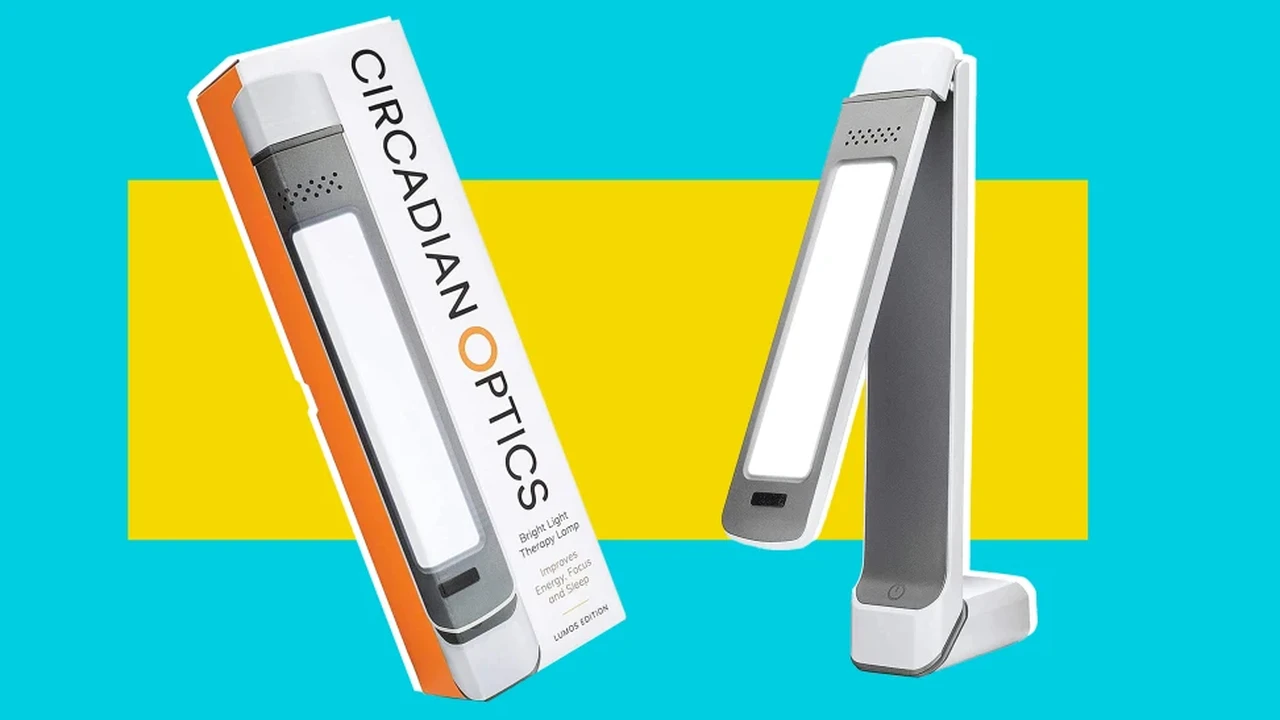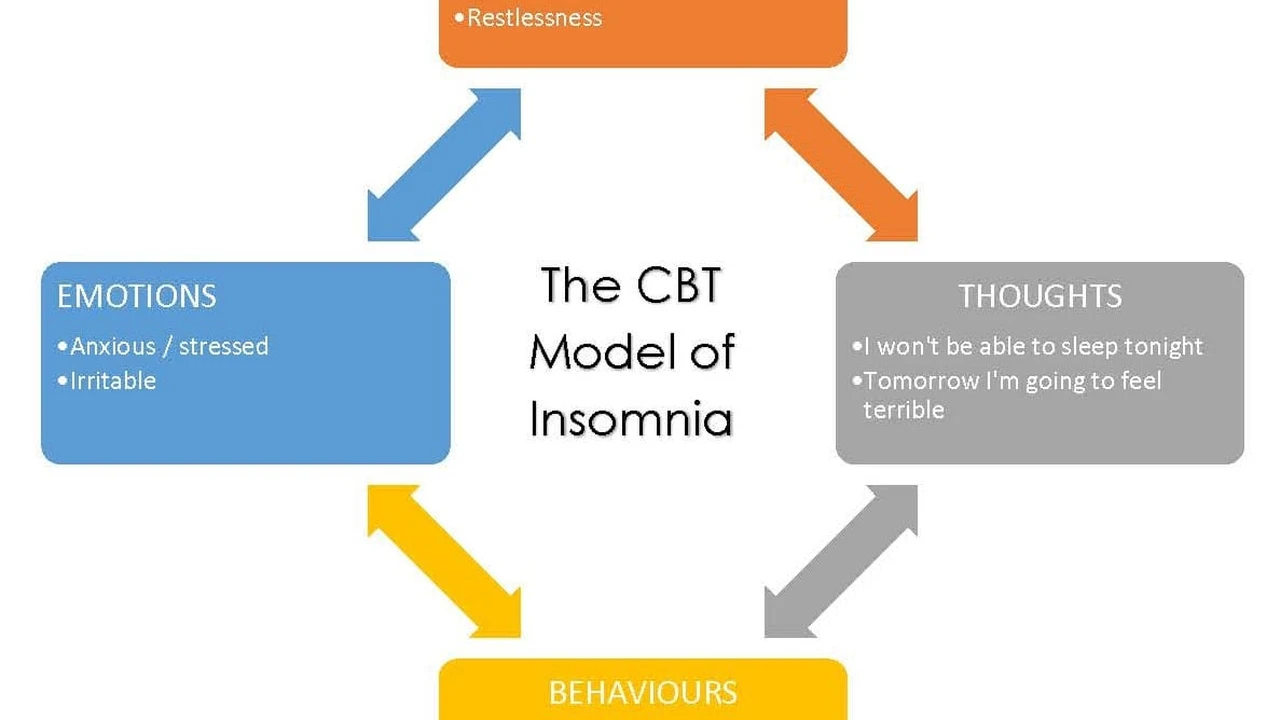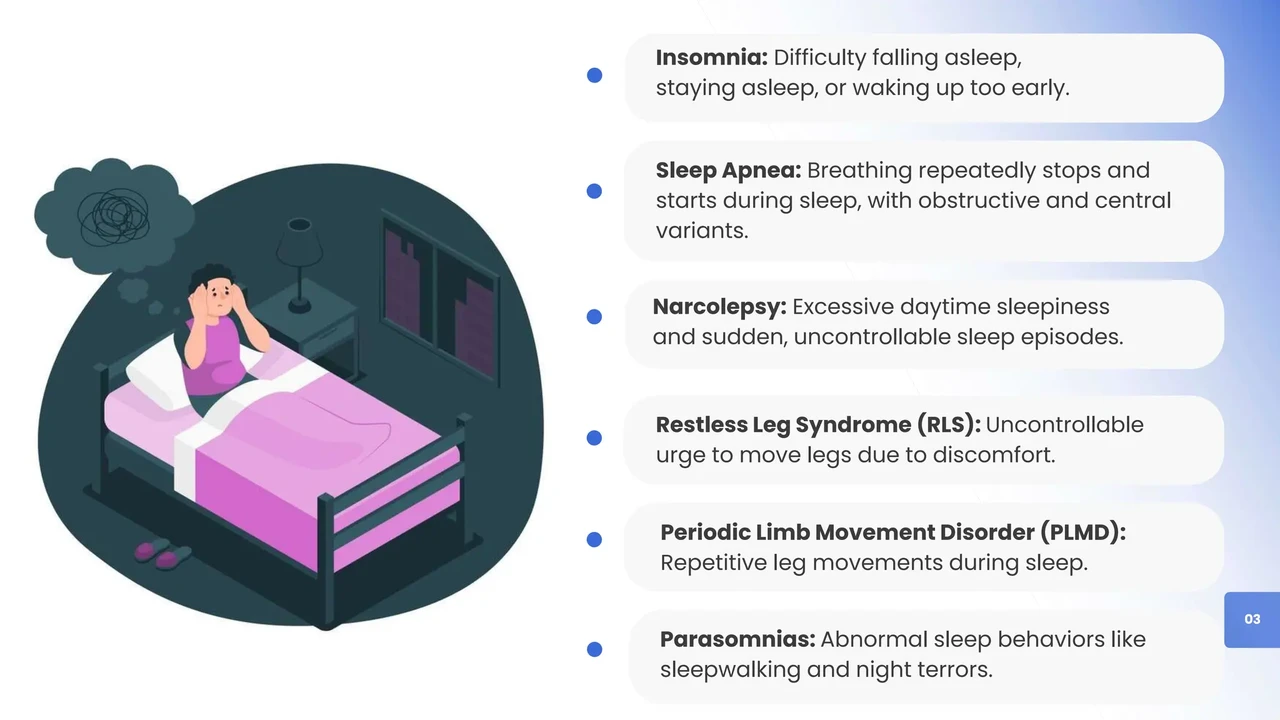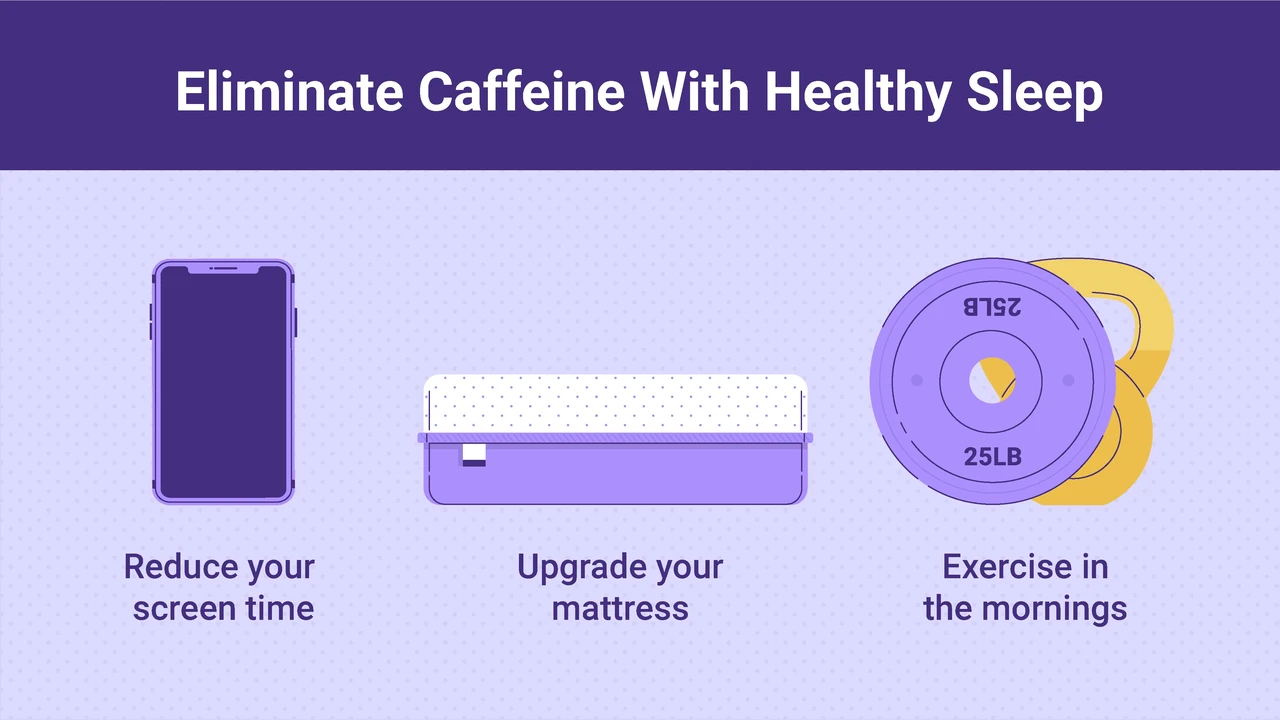Light Therapy Devices for Circadian Rhythm
Understand how light therapy devices can reset your circadian rhythm. Combat seasonal affective disorder and jet lag.

Light Therapy Devices for Circadian Rhythm
Understanding Your Circadian Rhythm and Its Importance
Hey there, ever feel totally out of sync? Like you're wired when you should be winding down, or dragging yourself through the day when you need to be sharp? Chances are, your circadian rhythm might be a bit off. Think of your circadian rhythm as your body's internal 24-hour clock. It's a natural, internal process that regulates the sleep-wake cycle and repeats roughly every 24 hours. This isn't just about when you feel sleepy or awake; it influences pretty much every physiological process in your body, from hormone release and eating habits to digestion and body temperature. When your circadian rhythm is aligned, you feel energized during the day, sleep soundly at night, and generally feel good. But when it's disrupted – by things like jet lag, shift work, or even just not getting enough natural light – it can throw everything out of whack, leading to fatigue, mood swings, and even long-term health issues.
One of the most powerful external cues for our circadian rhythm is light. Specifically, bright light, especially in the morning, tells our brain to suppress melatonin (the sleep hormone) and boost cortisol (the wakefulness hormone). Conversely, darkness signals melatonin production, preparing us for sleep. So, if you're not getting enough bright light at the right times, or too much light at the wrong times, your internal clock can get confused. This is where light therapy devices come into play. They're designed to deliver specific wavelengths and intensities of light to help recalibrate your body's natural rhythm, making sure you're getting the right light signals at the right time.
What Are Light Therapy Devices and How Do They Work for Sleep and Mood
So, what exactly are these light therapy devices? Essentially, they're specialized lamps or gadgets that emit bright light, often mimicking natural sunlight, but without the harmful UV rays. They come in various forms: light boxes, dawn simulators, and even wearable devices. The core principle behind them is phototherapy, which is the use of light to treat various conditions. For circadian rhythm regulation, these devices work by stimulating specific photoreceptors in your eyes, particularly those that are highly sensitive to blue light. These photoreceptors send signals to the suprachiasmatic nucleus (SCN) in your brain, which is the master clock controlling your circadian rhythm. By exposing yourself to bright light at strategic times, you can effectively tell your SCN to adjust its timing.
For example, if you're struggling with morning grogginess or Seasonal Affective Disorder (SAD), using a light therapy lamp first thing in the morning can help suppress melatonin and boost your energy levels, signaling to your body that it's daytime. If you're dealing with jet lag, using a light device at your destination's morning time can help you adjust faster. For shift workers, strategic light exposure can help them stay alert during their working hours and then wind down when they need to sleep. It's all about sending the right light signals to your brain to keep your internal clock ticking smoothly.
Combatting Seasonal Affective Disorder SAD with Light Therapy
Let's talk about SAD, or Seasonal Affective Disorder. This is a type of depression that typically occurs during the fall and winter months when natural light exposure is limited. People with SAD often experience symptoms like low energy, increased sleepiness, weight gain, and feelings of sadness or hopelessness. The prevailing theory is that reduced sunlight disrupts the body's internal clock, leading to a decrease in serotonin (a mood-regulating neurotransmitter) and an increase in melatonin, making people feel sluggish and depressed. Light therapy is a first-line treatment for SAD and has been shown to be highly effective.
The idea is to replace the missing natural sunlight with a bright light therapy lamp. Typically, these lamps emit 10,000 lux of light, which is significantly brighter than regular indoor lighting. The recommended usage is usually 20-30 minutes each morning, ideally within the first hour of waking up. This morning light exposure helps to reset the circadian rhythm, suppress melatonin, and boost serotonin levels, effectively alleviating SAD symptoms. It's like giving your brain the sunlight it's craving during those dark winter months. Many users report feeling more energetic, less sleepy, and generally more positive after consistent use.
Beating Jet Lag and Shift Work Sleep Disorder with Strategic Light Exposure
Jet lag and shift work sleep disorder are classic examples of circadian rhythm disruption. When you fly across multiple time zones, your internal clock is still on your home time, while the external environment is on a different schedule. This mismatch causes jet lag symptoms like fatigue, insomnia, and digestive issues. Similarly, shift workers who regularly change their sleep-wake schedules often struggle with sleep problems and daytime sleepiness because their bodies are constantly trying to adapt to an unnatural rhythm.
Light therapy can be a game-changer for both. For jet lag, the strategy is to expose yourself to bright light at specific times in your destination's time zone to help your body adjust faster. For example, if you're traveling east, you might want to expose yourself to bright light in the morning at your destination to help you wake up and suppress melatonin. If you're traveling west, you might want to avoid bright light in the evening at your destination to delay your sleep onset. There are even apps and calculators that can help you determine the optimal light exposure schedule based on your travel plans.
For shift workers, light therapy can help them stay alert during their night shifts and then promote sleep during their daytime sleep periods. For instance, using a light therapy device during the first few hours of a night shift can help boost alertness. Then, when it's time to sleep during the day, avoiding bright light and creating a dark sleep environment is crucial. It's all about manipulating light signals to align your body clock with your work schedule, making those irregular hours a bit more manageable.
Types of Light Therapy Devices and Their Best Use Cases
Alright, so you're convinced light therapy might be for you. But what kind of device should you get? There are a few main types, each with its own strengths:
Light Boxes for SAD and General Energy Boost
These are the most common type of light therapy device, especially for SAD. They're typically large, rectangular boxes that emit a very bright, full-spectrum light, usually 10,000 lux. You place them on a table or desk and sit a certain distance away (usually 16-24 inches) for 20-30 minutes each morning. They're designed to mimic natural sunlight and are excellent for boosting mood and energy, especially during darker months. They're generally not portable, so they're best for home or office use.
- Best Use Case: Daily morning use for SAD, general energy boost, and regulating circadian rhythm at home.
- Example Product: Carex Day-Light Classic Plus Bright Light Therapy Lamp
- Features: 10,000 lux, adjustable height and angle, glare-free, UV-filtered.
- Usage: Sit 12-18 inches away for 20-30 minutes in the morning.
- Price Range: ~$150 - $200 USD
- Why it's good: This is a classic for a reason. It's medically proven for SAD, provides consistent bright light, and is very durable. The adjustable stand is a big plus for finding the right angle.
- Example Product: Philips SmartSleep Connected Sleep and Wake-Up Light
- Features: Not a traditional 10,000 lux light box, but a dawn simulator with light therapy features. It has a customizable sunrise simulation, sunset simulation, and guided breathing programs. It connects to an app for personalized sleep insights.
- Usage: Place on your nightstand. The light gradually brightens before your alarm time.
- Price Range: ~$180 - $250 USD
- Why it's good: While not a pure SAD lamp, its sunrise simulation is excellent for gentle waking and circadian rhythm alignment. The app connectivity adds a smart element for sleep tracking and coaching.
Dawn Simulators Wake-Up Lights for Gentle Mornings
These devices are designed to gradually brighten your room over a set period (e.g., 30 minutes) before your alarm goes off, mimicking a natural sunrise. This gentle awakening helps to naturally suppress melatonin and prepare your body to wake up, leading to a less jarring and more refreshed feeling. Many also include sunset simulations to help you wind down in the evening. They're great for anyone who struggles with waking up to a sudden alarm or wants a more natural start to their day.
- Best Use Case: Gentle waking, improving morning mood, regulating sleep-wake cycle.
- Example Product: Philips SmartSleep Sleep and Wake-Up Light HF3520
- Features: Colored sunrise simulation, 5 natural wake-up sounds, FM radio, dimming light for bedtime.
- Usage: Set your desired wake-up time; the light will begin to brighten 20-40 minutes prior.
- Price Range: ~$80 - $120 USD
- Why it's good: This is a very popular and reliable dawn simulator. The gradual light and natural sounds make waking up much more pleasant, and it's a great entry point into light therapy for general circadian rhythm improvement.
- Example Product: Hatch Restore 2
- Features: Sunrise alarm, sound machine, meditation app, soft-glow reading light, customizable routines. App controlled.
- Usage: Place on nightstand. Customize your wake-up and wind-down routines via the app.
- Price Range: ~$199 USD
- Why it's good: More than just a dawn simulator, the Hatch Restore 2 is an all-in-one sleep assistant. Its extensive sound library, guided meditations, and customizable routines make it excellent for creating a holistic sleep environment.
Portable and Wearable Light Therapy Devices for Travel and On-the-Go
These are smaller, more compact devices designed for portability. Some are small light boxes you can easily pack, while others are wearable glasses that shine light directly into your eyes. They're ideal for travelers, shift workers, or anyone who needs light therapy on the go. The wearable options are particularly innovative, allowing you to get your light dose while doing other activities.
- Best Use Case: Jet lag, shift work, travel, or anyone needing flexible light therapy.
- Example Product: Luminette 3 Light Therapy Glasses
- Features: Wearable glasses that emit blue-enriched white light, 3 intensity levels, rechargeable.
- Usage: Wear for 20-45 minutes daily, typically in the morning. You can do other activities while wearing them.
- Price Range: ~$250 - $300 USD
- Why it's good: The ultimate in convenience for light therapy. You can wear them while eating breakfast, working, or commuting. Highly effective for jet lag and shift work due to their portability and direct light delivery.
- Example Product: TheraLite Aura Light Therapy Lamp
- Features: Compact, portable 10,000 lux light, adjustable stand, UV-free.
- Usage: Place on a desk or table, sit 12-18 inches away for 20-30 minutes.
- Price Range: ~$50 - $70 USD
- Why it's good: A great budget-friendly and portable option for those who need a traditional light box but want to take it with them. It's small enough for travel but still delivers the recommended lux.
Key Features to Look For When Buying a Light Therapy Device
Alright, so you're ready to dive in. But with so many options, how do you pick the right one? Here are the key features to consider:
Light Intensity Lux Level for Effective Treatment
This is probably the most important factor, especially if you're looking to treat SAD. For effective light therapy, particularly for SAD, you generally want a device that emits 10,000 lux. Lux is a measure of illuminance, or how much light falls on a surface. While lower lux devices might be fine for general mood boosting or gentle waking, 10,000 lux is the standard recommended by experts for clinical effectiveness. Always check the product specifications to ensure it meets this standard.
UV Filtering for Eye Safety
This is non-negotiable. While light therapy devices mimic natural sunlight, they should always filter out harmful UV rays. Prolonged exposure to UV light can damage your eyes and skin. Reputable manufacturers will explicitly state that their devices are UV-filtered or UV-free. Don't compromise on this for safety reasons.
Adjustability and Design for User Comfort
Consider how you'll be using the device. Do you need an adjustable stand so you can position the light at the right angle? Is it compact enough for your space? Some light boxes are quite large, while others are sleek and discreet. For wearable devices, comfort is key – you'll be wearing them on your face, so make sure they feel good. Look for features like adjustable brightness settings, timers, and even different light color options if that's something you're interested in.
Portability and Power Source for Convenience
If you travel frequently or need to use the device in different locations (e.g., home and office), portability is a big deal. Look for lightweight, compact designs. Also, check the power source: is it battery-operated, rechargeable, or does it need to be plugged in? Rechargeable options offer more flexibility, especially for wearable devices.
Additional Features and Smart Connectivity
Some devices come with extra bells and whistles. This could include built-in timers, alarm clocks, natural soundscapes, meditation programs, or even smart app connectivity. While not essential for basic light therapy, these features can enhance the user experience and provide additional benefits for sleep and well-being. For example, an app that tracks your usage and provides personalized recommendations can be very helpful.
How to Use Light Therapy Devices Safely and Effectively
Getting the most out of your light therapy device isn't just about buying the right one; it's also about using it correctly. Here are some tips for safe and effective use:
Optimal Timing for Circadian Rhythm Adjustment
This is crucial. For most people, especially for SAD or general energy boosting, the best time to use a light therapy device is first thing in the morning, within the first hour of waking up. This helps to suppress melatonin and signal to your body that the day has begun. Using it too late in the day, especially in the evening, can actually disrupt your sleep by delaying melatonin production. For jet lag or shift work, the timing will be more specific and might involve using it at different times depending on your schedule and direction of travel. Always follow the manufacturer's instructions or consult a sleep specialist for personalized timing advice.
Recommended Distance and Duration for Best Results
The effectiveness of light therapy depends on both the intensity of the light and the duration of exposure. For a 10,000 lux light box, the typical recommendation is to sit about 16-24 inches (40-60 cm) away for 20-30 minutes. If your device has a lower lux output, you might need to sit closer or use it for a longer duration. Always refer to your device's manual for specific recommendations. You don't need to stare directly into the light; you can read, eat breakfast, or work on your computer while the light is on, as long as it's within your field of vision.
Potential Side Effects and When to Consult a Professional
Light therapy is generally safe and well-tolerated, but some people might experience mild side effects, especially when first starting. These can include eye strain, headaches, nausea, or agitation. These usually subside within a few days as your body adjusts. If side effects persist or are severe, stop using the device and consult a healthcare professional. It's also important to note that light therapy might not be suitable for everyone, especially those with certain eye conditions (like glaucoma or macular degeneration), bipolar disorder (as it can trigger manic episodes), or those taking photosensitizing medications. Always talk to your doctor before starting light therapy, especially if you have any underlying health conditions or are on medication.
Integrating Light Therapy into Your Daily Routine for Long-Term Benefits
Light therapy isn't a one-time fix; it's something you integrate into your daily routine for ongoing benefits. Think of it like brushing your teeth – consistent daily practice yields the best results. For SAD, you'll likely use it daily throughout the fall and winter. For general circadian rhythm support, you might use it daily or as needed. Here are some tips for making it a seamless part of your life:
Consistency is Key for Circadian Rhythm Regulation
Just like your body clock thrives on regularity, so does light therapy. Try to use your device at the same time every morning. This consistency helps to reinforce the desired circadian rhythm and makes it easier for your body to adapt. Even on weekends, try to stick to a similar schedule, or at least keep your light therapy session within an hour or two of your weekday routine.
Combining Light Therapy with Other Sleep Hygiene Practices
Light therapy is a powerful tool, but it works best when combined with good sleep hygiene. This means maintaining a consistent sleep schedule, creating a dark and quiet sleep environment, avoiding caffeine and alcohol before bed, and getting regular exercise. Light therapy helps to set your internal clock, but these other practices ensure that your body is ready for sleep when the time comes. Think of it as a holistic approach to sleep optimization.
Monitoring Your Progress and Adjusting as Needed
Pay attention to how you feel. Are you waking up more easily? Do you have more energy during the day? Are your SAD symptoms improving? Keep a simple journal or use a sleep tracking app to monitor your progress. If you're not seeing the desired results, you might need to adjust the duration, intensity, or timing of your light therapy sessions. Don't hesitate to consult a sleep specialist or your doctor if you're unsure or need personalized advice. They can help you fine-tune your approach for optimal results.
Ultimately, light therapy devices offer a natural and effective way to reset your circadian rhythm, combat seasonal blues, and overcome the challenges of jet lag and shift work. By understanding how they work and using them correctly, you can harness the power of light to improve your sleep, mood, and overall well-being. So, go ahead, embrace the light, and get ready to feel more in sync with your body's natural rhythm!
:max_bytes(150000):strip_icc()/277019-baked-pork-chops-with-cream-of-mushroom-soup-DDMFS-beauty-4x3-BG-7505-5762b731cf30447d9cbbbbbf387beafa.jpg)






